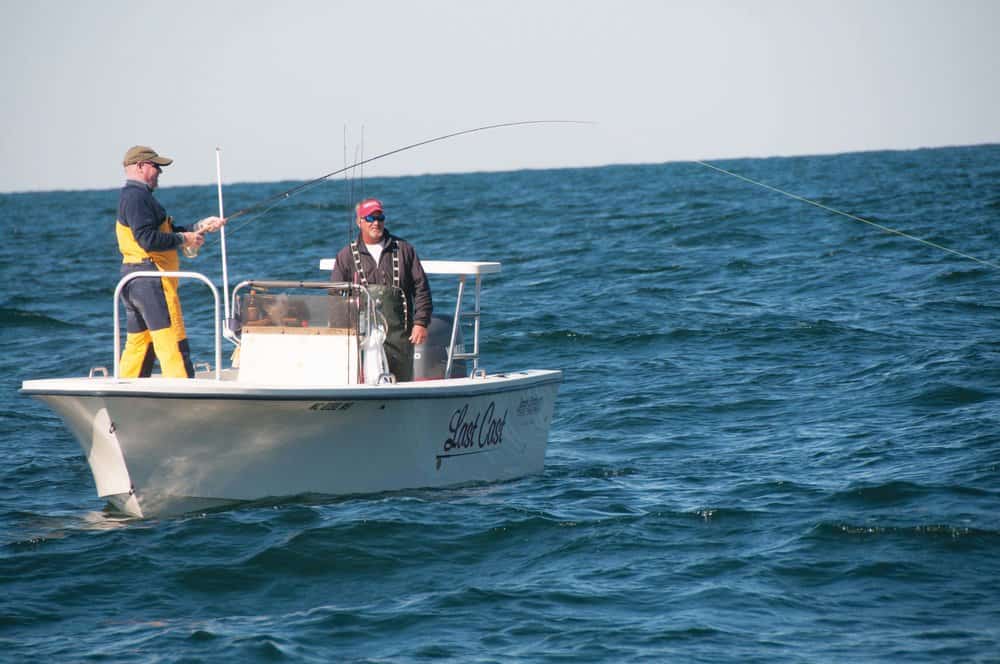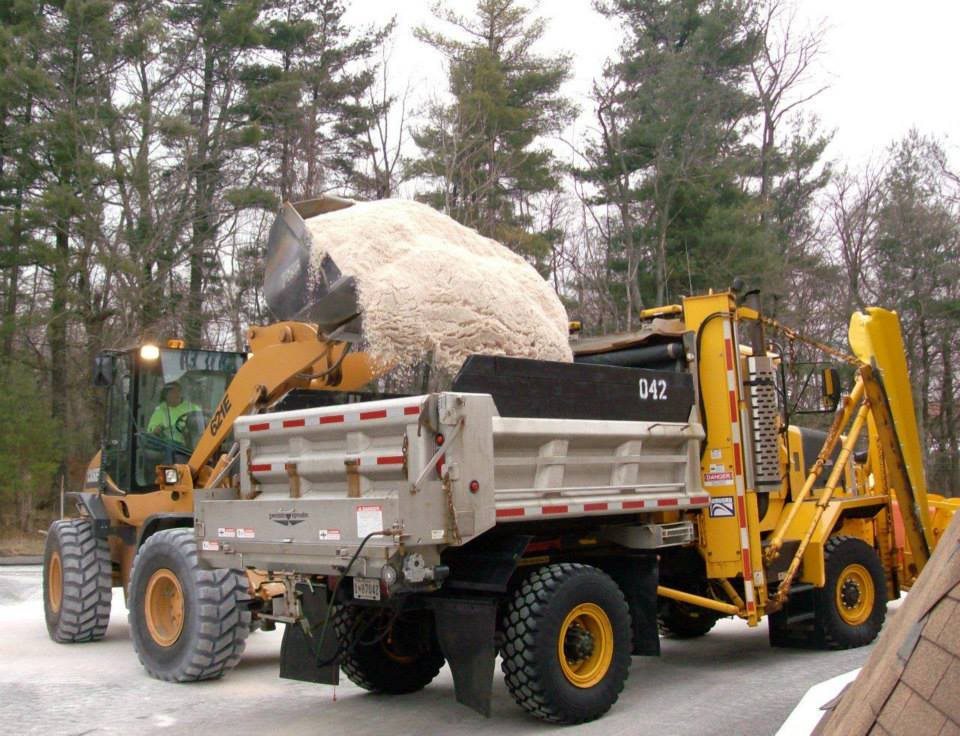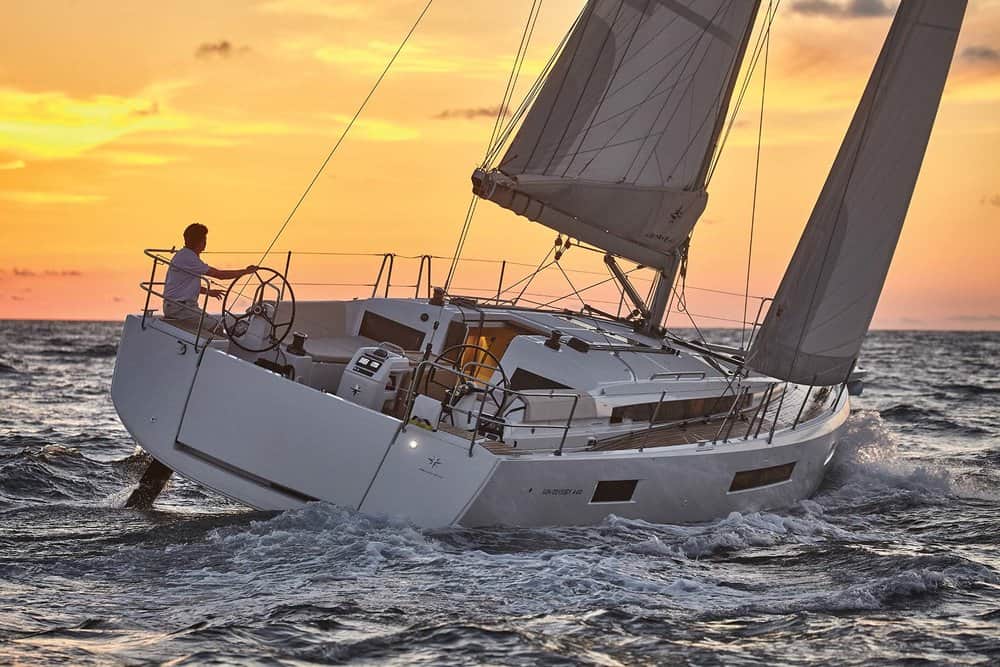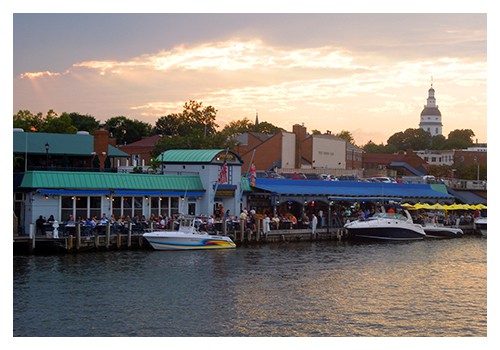LOA: 20’1″
Draft: 12″
Weight: 2,050 lb
Beam: 7’7″
Deadrise: 14°
Fuel: 57 gal
Max power: 200 hp
Local Sales & Service:
Annapolis Boat Sales annapolisboatsales.com
JonesBrothersMarine.com
In the early 1990s a tribe of cutting-edge fly-anglers discovered a dependable fall run of large false albacore around Cape Lookout, North Carolina. These little tunas measure 20 to 35 inches, weigh as much as 25 pounds, cruise at 20 knots and will hit a 30-knot burst when necessary. They are essentially inedible, and therefore hold no allure for meat fishermen, making them ideal for fly-anglers who generally care more for thrills than protein.
The standard bateaus and skiffs available at the time had too much stuff in the way of bow rails, T-tops, cleats and other line-snagging accoutrements to be ideal for the chase. Plus, these boats pounded mercilessly and even swamped in the sometimes-frightful breakers over the shoals and rips where the “albies” blitz.
Leading the charge for developing the right gear and techniques for this fishery was environmental law professor, author and saltwater fly-fishing fanatic, Tom Earnhardt. Earnhardt approached Morehead City based boatbuilders Rob and Donnie Jones about making a better boat for the job. It would have to have classic Carolina sea-keeping ability, a deep variable-V hull with quick planing aft sections, speed potential for the run-and-gun approach to the chase, flush pop-up cleats and lights, a low-profile console, raised casting decks and, most importantly, ample fly-rod storage. Chasing and catching these tuna rockets or so-called “atomic footballs” requires nimble boats and rapid reactions, and the battles often result in fly-rod destruction when a fish hits the afterburner at the very moment an angler sets the hook. The boat would need to have space for spare rods.
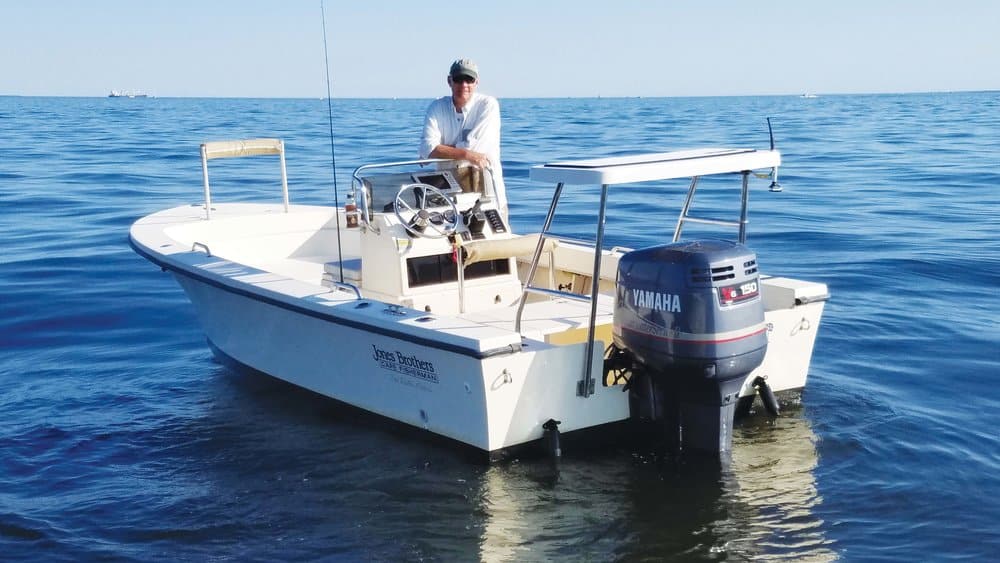
The result was the 1993 launch of the Jones Brothers Cape Fisherman 1910. The first anglers after Earnhardt to pick up new boats were the professionals. Within five years most of the full-time light-tackle big-water guides from Charleston to Rhode Island were towing Cape Fisherman boats to the salty hotspots in pursuit of striped bass, bluefish, and, of course, the albies.
At the time in my boat shop, we had similar light-tackle aspirations and were building Simmons Sea Skiffs, a Cape Fear-style fishing dory, with shallow-water Chesapeake fishing in mind. When we heard about the Cape Lookout false albacore eruption, Colin Crozier, my boatbuilding partner, and I loaded up and left for Carolina pretty much immediately. It was snowing as we left.
While our 18- and 20-foot skiffs held up to the challenge quite well from year-to-year, those Jones Brothers boats just had more beef, speed and comfort for the adventure. I wanted one.
Fast-forward 15 years to the day when I decided to give my 20-foot Simmons to my sister and replace it with . . . you guessed it.
I couldn’t afford a new one. Still can’t. An exhaustive worldwide search turned up a total of one used boat, a trade-in for a bigger Jones Brothers boat at a dealership in Massachusetts. I left to pick her up the next day. I’ve been testing her every chance I could for the past six years, two to four times a week in season.
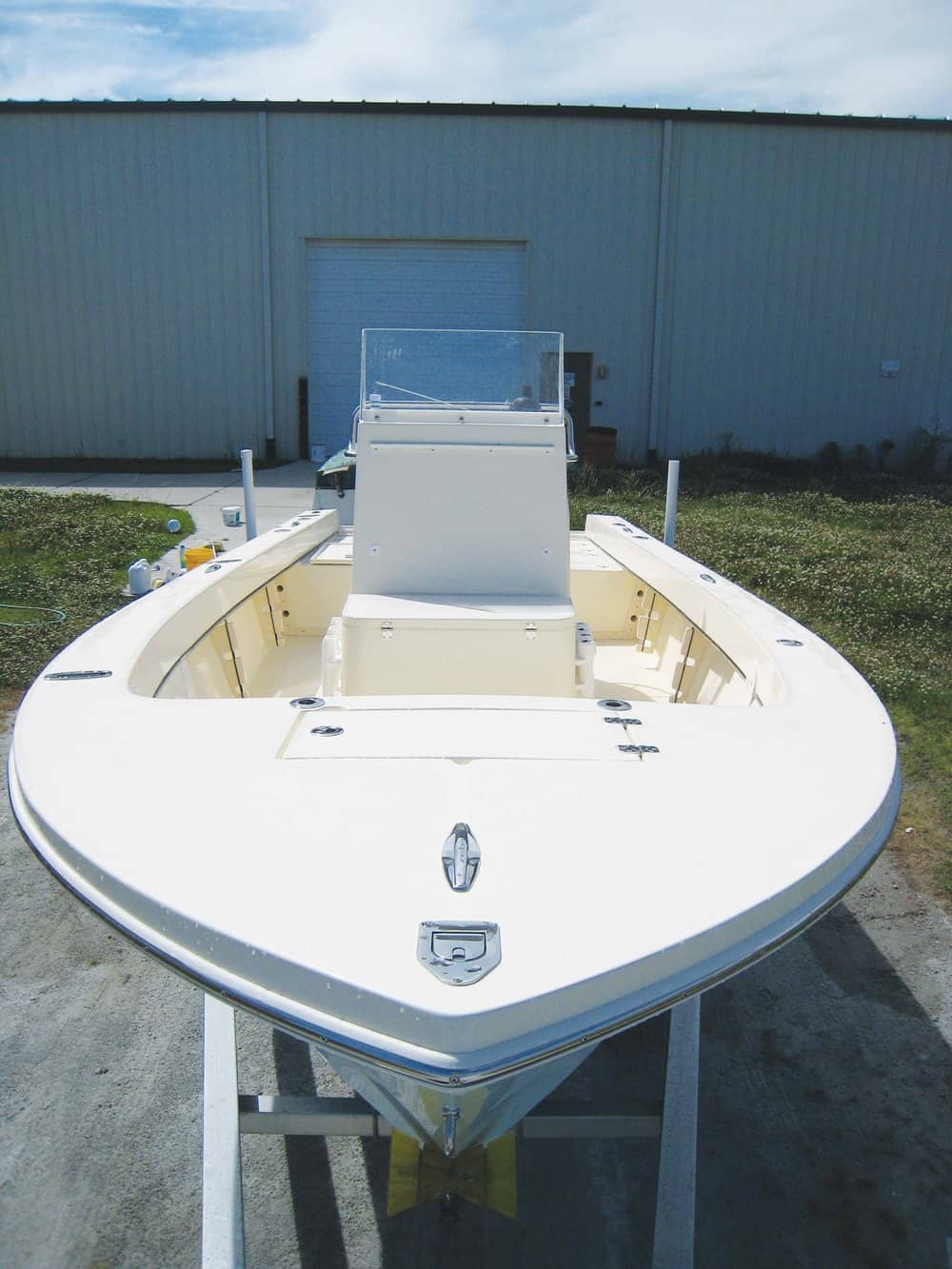
Here’s what I know:
• This is a boat designed and built by anglers, for anglers.
• There is nothing to snag a fly-line on.
• Storage is ample with six under gunwale fly-rod tube/holders, nine conventional rod holders scattered around, a live well, drop-in tackle box storage on both sides, and a huge under-deck forward storage area. Enclosed storage keeps the loose stuff organized and out of the way of the coils of fly line on the deck. Clear decks also make for more shuffling room when you are fighting a fish.
• The forward console seat storage box is insulated for whatever.
• My boat came with a poling platform, which is good for fish spotting and to hold a small rubber VHF antennae, but you don’t want to try poling a 3,600-pound boat. This is not a flats skiff.
Just use the engine if you need to move.
• Fuel capacity is 57 gallons, and if you have an old (1999) V-6 two-stroke engine like I do, you will need every drop, and lots of oil too. The standard Yamaha 150 four-stoke that comes with the boat will serve you much better with a sweet spot of 22.8 mph burning 5.5 gallons an hour at 3500 rpm. I get closer to 27 mph at 3500 rpm, but it’s too painful
to consider how much fuel I’m burning.
• The aft casting decks are connected by a clever folding bridge deck. The arrangement allows efficient flow-through of any rain or spray water to the scuppers while providing easy dancing room around the aft end of the boat while playing a feisty fish. On the underside of the bridge is a PVC cutting board for divvying up bloodworms on white perch fishing days with the kids.
• Beginning with the 2006 model year, Jones went to all-composite construction using vacuum-laminated glass on foam panels for the decks and stringers. Prior to 2006, the decks were wood cored, which deteriorates over time. This is not necessarily the end of the line for the boat, but it’s a problem.
• The boat’s narrow waterline beam is part of her soft ride secret. There’s just not that much boat
on the water to pound in the Chesapeake’s notorious chop.

• She comes standard with Lenco trim tabs to account for fore/aft and side-to-side trim, which is helpful for most boats and essential for a fairly narrow boat like this.
• Despite its sharp 45-degree forward V and narrow waterline, this is the driest boat of this size
I have ever been on.

• The aft deadrise is 14 degrees.
• She’s rated for up to 200 horsepower. 150 is plenty.
• The Coast Guard rates her for up to seven people and a total load of 1,600 pounds, in which case you probably would want 200 horsepower. My experience indicates that she’s best for fishing with two or three, and four adults is about right for a jaunt across the Bay for crab cakes. She also works perfectly well with a small gang of youngsters for perch fishing jaunts up the Severn River.
• Jones makes other sizes (20- to 26-feet), based on the original Cape Fisherman concept, and they make an excellent line of inshore bateaus suitable for crabbing and protected-water fishing.
• The boats are made to order. At the moment, there’s a 12- to 14-week wait to get a Cape Fisherman.
• A standard cream-colored Cape Fisherman 1910 with a four-stroke Yamaha 150 and a tandem aluminum I-beam trailer will run close to $62,000 before any special options—covers, cushions, and so on.
• I’m sad to say that Rob Jones passed away unexpectedly several years ago. He and Donnie would sometimes barbecue a pig served with fresh hush puppies, backed up with tubs of banana puddin’ for customers and friends on Harkers Island during the false albacore run.
• Donnie Jones, like his brother, is about the nicest person you would ever want to do business with.

